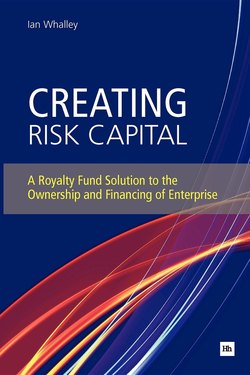Читать книгу Creating Risk Capital - Ian Whalley - Страница 8
На сайте Литреса книга снята с продажи.
ОглавлениеTerminology
The book aims to adopt a lighter touch than that of a typical textbook or academic work. It also seeks to avoid jargon and mystique for, as Walter Bagehot expressed in Lombard Street, his classic account of the Victorian City, a writer on money must blame himself if he is not understood. [2] Nonetheless some clarification of terminology as used in this book may be helpful.
An enterprise is much the same as a firm or a company, where individuals take part in productive activity of one kind or another. It may adopt a corporate structure, the main form of economic association for enterprise offered by the state in the major market economies. This corporate form is referred to in Britain as a company and in the USA as a corporation. As a practical matter, all these terms are used interchangeably in this book to describe an enterprise, whether a business or a non-profit concern. Enterprise and company are, however, the preferred terms, the first conveying a sense of endeavour and risk, and the second the idea of a group of people with a common objective.
A limited company is the legal term in Britain for a company owned by its members or shareholders whose liability is limited. A limited company with capital over a certain size and allowed to issue shares to the public is known as a public limited company or plc, and a plc whose shares are quoted on a recognised stock exchange may be described as a quoted or listed company, or simply as a public company. The latter term does not mean a state-owned enterprise, unless those shares, or a majority of them, are held by the state.
A non-profit or not-for-profit organisation is one which may earn surpluses, but may not distribute them to the persons who control it. A co-operative is a firm in which ownership is assigned to its members, usually a particular constituency such as customers, suppliers or employees. A mutual is a firm which is owned by its members, all of whom provide the same services and receive the same benefits, but the term is also often applied to institutions such as building societies, where some members are savers and others are borrowers.
Risk capital is, as its name implies, money or other property which is at risk. As such it could come in various forms, but in its purest form it refers to the ownership capital, or equity capital, which carries the rights to control a firm and to appropriate its profits, and bears its losses ahead of others who deal with it. The preferred terms are risk capital and venture capital, conveying again the idea of active endeavour and risk, in contrast to equity capital, which may carry a sense of passive ownership.
In the context of royalty funding, the investor(s) would be the institution(s) or individual(s) providing capital to a specialised royalty funding organisation described as the royalty funder. The royalty funder would use this capital to provide royalty funds to individual enterprises and build up a portfolio of such funds.
Endnote
2 Christopher Fildes, A City Spectator: Bulls, Bears, Booms and Boondoggles as chronicled in CITY & SUBURBAN (Nicholas Brealey Publishing, 2004), p. 2. [return to text]
